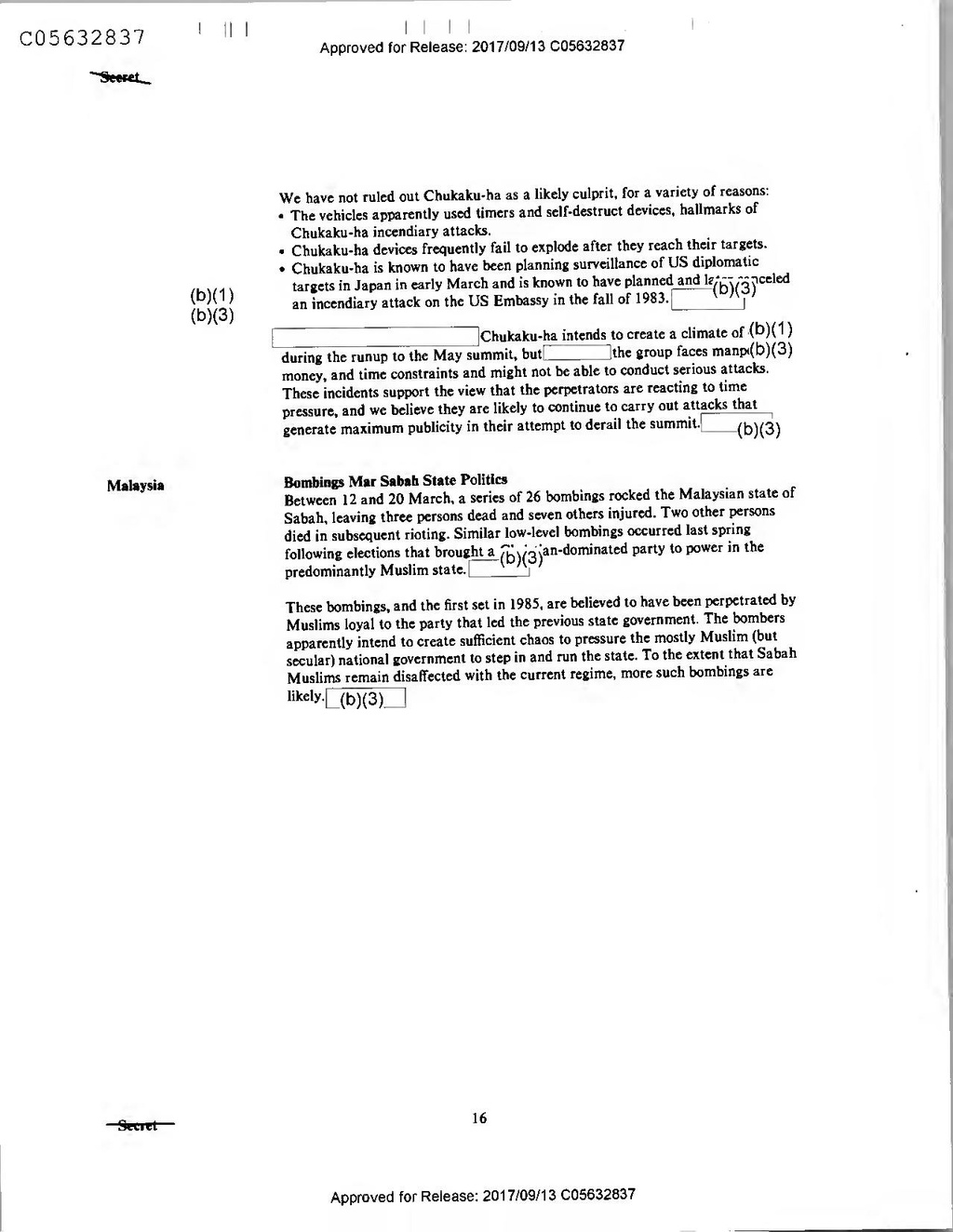(b)(1) (b)(3)
We have not ruled out Chukaku-ha as a likely culprit, for a variety of reasons:
- The vehicles apparently used timers and self-destruct devices, hallmarks of Chukaku-ha incendiary attacks.
- Chukaku-ha devices frequently fail to explode after they reach their targets.
- Chukaku-ha is known to have been planning surveillance of US diplomatic targets in Japan in early March and is known to have planned and l:(b)(3)celed an incendiary attack on the US Embassy in the fall of 1983.
- Chukaku-ha intends to create a climate of (b)(1) during the runup to the May summit, but the group faces manpı(b)(3) money, and time constraints and might not be able to conduct serious attacks. These incidents support the view that the perpetrators are reacting to time pressure, and we believe they are likely to continue to carry out attacks that generate maximum publicity in their attempt to derail the summit.
-(b)(3)
Malaysia
Bombings Mar Sabah State Politics Between 12 and 20 March, a series of 26 bombings rocked the Malaysian state of Sabah, leaving three persons dead and seven others injured.
Two other persons died in subsequent rioting. Similar low-level bombings occurred last spring following elections that brought a b)(3jan-dominated party to power in the predominantly Muslim state.
These bombings, and the first set in 1985, are believed to have been perpetrated by Muslims loyal to the party that led the previous state government.
The bombers apparently intend to create sufficient chaos to pressure the mostly Muslim (but secular) national government to step in and run the state.
To the extent that Sabah Muslims remain disaffected with the current regime, more such bombings are likely. (b)(3)
Secret 16
Approved for Release: 2017/09/13 C05632837
